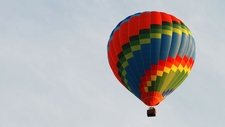Thermal Energy
Readiness

TEKS Objective
Explore the uses of energy including mechanical, light, thermal, electrical, and sound energy.
Essential Understanding
The student knows that energy occurs in many forms and can be observed in cycles, patterns, and systems.
Science Background
Thermal Energy Physics: Thermalenergy.org (website) - Explains the physical science of thermal energy and relates it to heat, absolute zero, temperature scale and more.
Thermal Energy Physics
Thermalenergy.org
Geothermal Energy: Energy Quest (website) - Students learn about forms and sources of geothermal energy; main menu provides a detailed overview of energy uses and sources.
Geothermal Energy
Energy Story, California Energy Commision, www.energyquest.ca.gov
Heat Transfer with Coffee: School for Champions (website) - Excellent explanation of heat transfer and insulation with an everyday item. Includes questions that could prompt discussion on heat transfer.
Heat Transfer with Coffee
by Ron Kurtus, School for Champions, www.school-for-champions.com
Signature Lesson
How Much Heat Will It Hold? TeachEngineering (website) - Students discover the importance of heat capacity and relate thermal energy to heat capacity by comparing the heat capacities of different materials and graphing changes in temperature over time for a specific material.
How Much Heat Will It Hold?
TeachEngineering, www.teachengineering.org
- Supporting Lessons
- Extensions
- Assessment Ideas
- Literature Connections
- Related
TEKS - Additional Resources
Supporting Lessons
Investigating the Types of Energy in Different Objects: Science and Health Partnership (website) - In this activity, students learn that energy comes in different forms and that different objects exhibit multiple forms of energy.
Using Heat from the Sun: BioEd Online (website) - Students observe and describe how energy from sunlight can heat water, and explain the role of the Sun in Earth’s water cycle.
Using Heat from the Sun
BioEd Online, www.bioedonline.org
Capturing the Sun’s Warmth: TeachEngineering (website) - Students investigate the thermal energy storage capacities of different materials to determine which materials are best for use in passive solar building design.
Capturing the Sun’s Warmth
TeachEngineering, www.teachengineering.org
Elaboration Lessons and Extensions
Converting Energy: Science Netlinks (website) - This lesson explores the idea of energy transformations and conversions and helps students understand what energy is and how it can be measured.
Converting Energy
Science Netlinks, www.sciencenetlinks.com
Hot Cans and Cold Cans: TeachEngineering (website) - Students apply the concepts of conduction, convection and radiation to design an experiment that uses common items to investigate heat transfer.
Hot Cans and Cold Cans
TeachEngineering, www.teachengineering.org
Saved by the Sun Solar Cooker: NOVA Teachers (website) - Students follow a seven-step process to design, build and test a solar cooker that will pasteurize water.
Saved by the Sun Solar Cooker
NOVA Teachers, www.pbs.org
Let the Sun Shine: TeachEngineering (website) - Students learn about different ways we use energy from the sun.
Let the Sun Shine
TeachEngineering, www.teachengineering.org
Assessment Ideas
After conducting the Signature Lesson, How Much Heat Will It Hold?, have students design and make a thermos using a small jar inside a large jar with one of the materials from the activity as the buffer around the small jar. Have students place hot or cold water inside their thermos and measure the temperature at regular intervals to see how will it worked.
Stop the Heat from Escaping: TeachEngineering (website) - In this activity, students act as engineers and determine which type of insulation would conserve the most energy in a building.
Stop the Heat from Escaping
TeachEngineering, www.teachengineering.org
Literature Connections
Energy Heat, Light, and Fuel (Amazing Science). Stille, D. (ISBN-13: 978-1404802490)
The Sun. Ring, Susan (ISBN-13: 978-0736820226)
Arrow to the Sun. McDermott, Gerald (ISBN-13: 978-0140502114)
Additional Resources
Thermal Physics: The Physics Classroom (website) - Provides an introduction to thermal physics.
Thermal Physics
The Physics Classroom, www.physicsclassroom.com
Heat Transfer: School for Champions (website) - Basic information about heat transfer by conduction, convection and radiation, along with other heat-related topics relevant to classroom instruction.
Heat Transfer
by Ron Kurtus, School for Champions, www.school-for-champions.com
Mechanical Energy: Kids & Energy: Mechanical energy explained in a fun, kid-friendly way.
Mechanical Energy
Kids & Energy, www.kids.esdb.bg
TEKS Navigation
Grade 5
Need Assistance?
If you need help or have a question please use the links below to help resolve your problem.

Comments